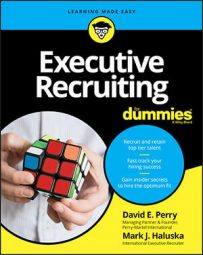- Assemble your team. This will consist of the hiring manager, the ultimate hiring manager, a search committee, the search committee chair, an internal recruiter, a sourcer, a researcher, a marketing copywriter, and a coordinator. (Note that some of these roles may be combined.)
- Perform a needs analysis. During this step, you'll confirm the need and define your requirements.
- Generate the necessary documentation. Specifically, you need to generate a search committee charter, a job description, a position profile, a confidential candidate brief (CCB), an interview guide, advertising copy, recruiting scripts, reference check questions, and a standard rejection letter.
- Research the market.
When you research the market, you identify two things:
- Who to look for: What functional position, title, and span of control the ideal candidate holds
- What to look for: What skills, competencies, experience, and accomplishments the ideal candidate has
- Source candidates. The focus of this phase is identifying possible candidates, both active and passive.
- Recruit candidates. This phase involves three key steps — paring down your list of prospects, choosing a benchmark candidate and putting him or her through the hiring process, and processing all remaining candidates.
- Interview the short list. During this phase, you'll interview the top ten or so candidates who've made your short list. When you finish this phase, you'll have identified your A-1 candidate.
- Check references. Before you extend a formal offer to the candidate, you absolutely positively must check the candidate's references. That means soliciting the views of both direct and indirect references.
- Make an offer. In this phase, you close the deal by extending an offer (contingent on references). This isn't a verbal thing; it's an actual on-paper offer letter.
- Onboard the new hire. No, it's not the recruiter's job to train the executive in his or her new role. But it is the recruiter's job to ensure the company is happy with the new hire (and vice versa). That means scheduling touchpoints with the new hire and with the search chair.

